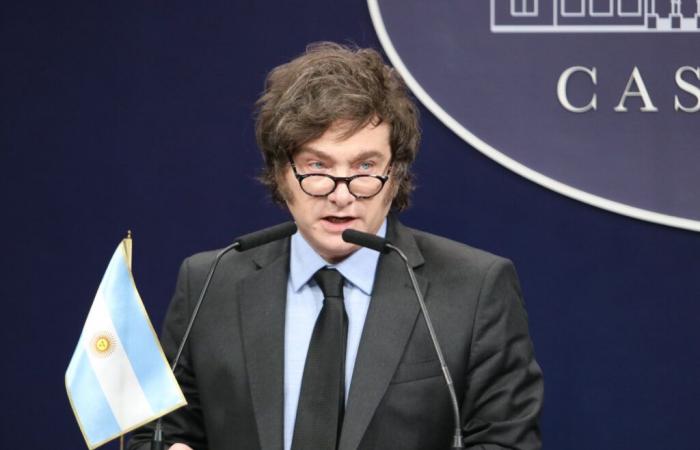
The new exchange regime that Argentina premiered between the countries of the region, but is not one of the most chosen in the world. According to a survey of the monetary fund between 196 cases, near Half of the economies have a controlled devaluation scheme or a fixed exchange rateMeanwhile, only 17% are governed with a managed flotation, such as that adopted by the management of Javier Milei.
The data arise from the annual agency report on regimes and exchange restrictions, published in December with data until 2023. At that time, Argentina maintained a gradual adjustment system set by the central Bank (Crawling PEG). But since last week The government ordered a dollar with flotation bands between $ 1,000 and $ 1,400, where the price is set by the market with interventions on margins.
In this way, it joined the group of 32 countries that in 2023 used that exchange pattern, such as This is the case of Brazil, Chile, Colombia, Costa Rica, Paraguay, Peru, UruguayBelarus, Liberia, Yemen, Albania, Czech Republic, Georgi, Hungary, Iceland, India, Indonesia, Israel, Kajistan, South Korea, Mauritania, Moldavia, New Zealand, South Africa, Thailand, Philippines and Switzerland, among others.
According to the fund classification, 87 countries use some variant less strict exchange ratehalf with some variant of crawling peg (24%) and the other with a fixed exchange rate (21%); 32, they have one administered flotation (17%), 31 free flotation (16%); 18, Other controlled regimes (9%); y 26, strict systemsof which 14 work without legal tender (7%) and 12 with conversion or convertibility boxes (6%).
“when it is said that everyone floats, in reality the great powers have free flotation and The administered flotation is predominant in the Latin American region, but mostly after having gone through a period of fixed exchange ratelike us in the 90 ‘. Then we returned to lack of control, while they exterminated inflation by setting the exchange rate, “said Federico Machado, an economist from the Open Economy consultant.
According to the report, the administered flotation means that “the floating exchange rate is largely determined by the market, without a determinable or predictable trajectory,” and Interventions are to prevent “undue situations”while in the free flotation they are “exceptional” with information provided by the authorities that were limited to a maximum of three times in six months, no more than three business days on each occasion.
-After partially opening the stocks and receiving US $ 12,000 million from the IMF, The Government seeks to encourage a decrease from the dollar to $ 1,000 that slows inflation expectations (From 3.7% in March) and encourages investments in pesos, something that some economists see as a “return to the crawling PEG”. “This was never seen because you never saw a financial fiscal surplus, zero broadcasting and free exchange exchange,” Milei said last week.
The singular thing in the case of Argentina is that a policy of monetary aggregateswhich implies a stricter control of the amount of money to lower inflation, something that the government began to do – with less intensity – in July 2024 after the first exchange rate. While 26 countries use that approach, Only 6 do it with a floating dollar (Bierusa, Liberia, Madagascar, Seychelles, Suriname and Yemen).
Of the study of almost 5,000 pages, it follows that Most countries that float free or dirty Inflation objectives (45), such as Australia, Canada, Japan and Russia, and those of the region. This means that if they overlap the inflation target, they lower the interest rate to increase the supply of money, and if they breach it, they raise the interest rate to contract monetary expansion. The United States Fed, on the other hand, has a double mandate of inflation policy and employment objective.
Argentina already tested all recipes, without success. Federico Sturzenegger applied the inflation goals with free flotation when he occupied the Central Bank in 2017, but failed due to the acceleration of prices in 2018. Then, that year, Mauricio Macri agreed a loan for US $ 57,000 million with the IMF (used US $ 44,000 million), in October The run unleashed by the passage.
What reflects the investigation of the fund is that The most chosen monetary policy at a global level (81) is the exchange anchor to control the value of the exchange rate through purchases and systematic sales of its central banks and thus control inflation. And it is an approach associated with the fixed exchange or crawl regimes, such as that of the Petroleums of the Middle East, the Southeast Asia and Central America and the Caribbean.
“Developed countries are inclined to free flotation and Those who come from many imbalances and need to lower inflation, by more rigid regimes. The most inflationary are with crawl or appear in other regimes, those that have flotation are in the middle with low and moderate inflation, from 8 to 12% per year, we have high inflation. And those who have fixed exchange rate or convertibility Inflation is low or zero, “Machado explained.





